Creating your own cartoon character is an exciting and creative process that allows you to bring your imagination to life. Whether you’re developing a character for a comic strip, animation, or just for fun, the key is to design a character that is both visually appealing and full of personality. This step-by-step guide will help you through the process of creating a unique and memorable cartoon character, from concept to final design.
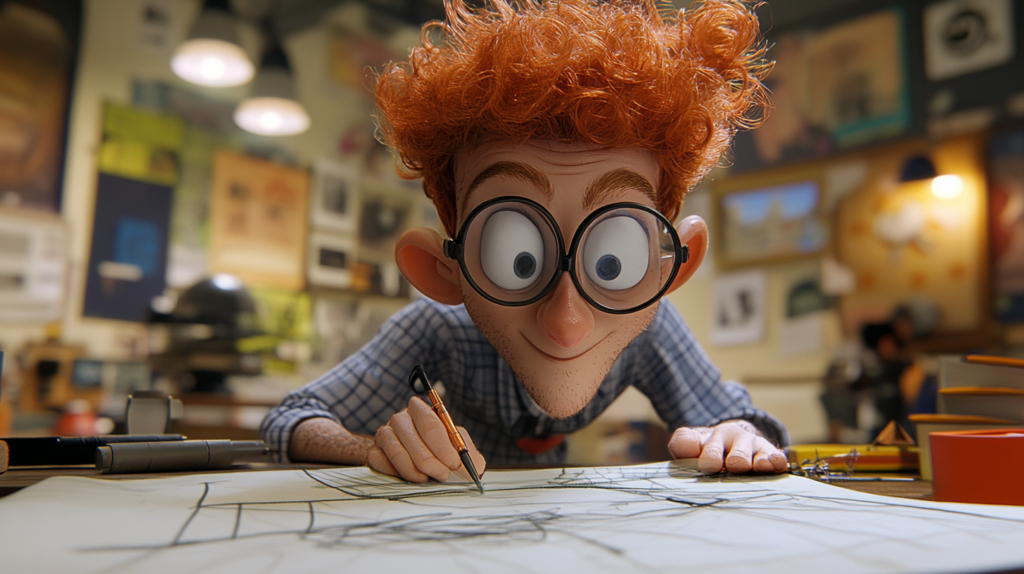
1. Conceptualizing Your Character
Define the Purpose and Role
Before you start sketching, it’s important to define the purpose and role of your character. Ask yourself the following questions:
- What is the character’s role in the story or world you’re creating? Are they a hero, sidekick, villain, or something else?
- What kind of story do you want to tell with this character? Is it a comedy, drama, fantasy, or adventure?
- Who is your target audience? Will your character appeal to children, teenagers, or adults?
Understanding your character’s role and the context in which they exist will help guide your design choices and ensure that the character fits well within the world you’re creating.
Create a Backstory
Even if your character’s backstory isn’t fully explored in your story, having a background can help inform their design and personality. Consider these elements when creating a backstory:
- Where does your character come from?
- What are their motivations, goals, and dreams?
- Do they have any fears or weaknesses?
- What past experiences have shaped their personality?
A well-thought-out backstory adds depth to your character and can provide inspiration for their physical appearance and behavior.
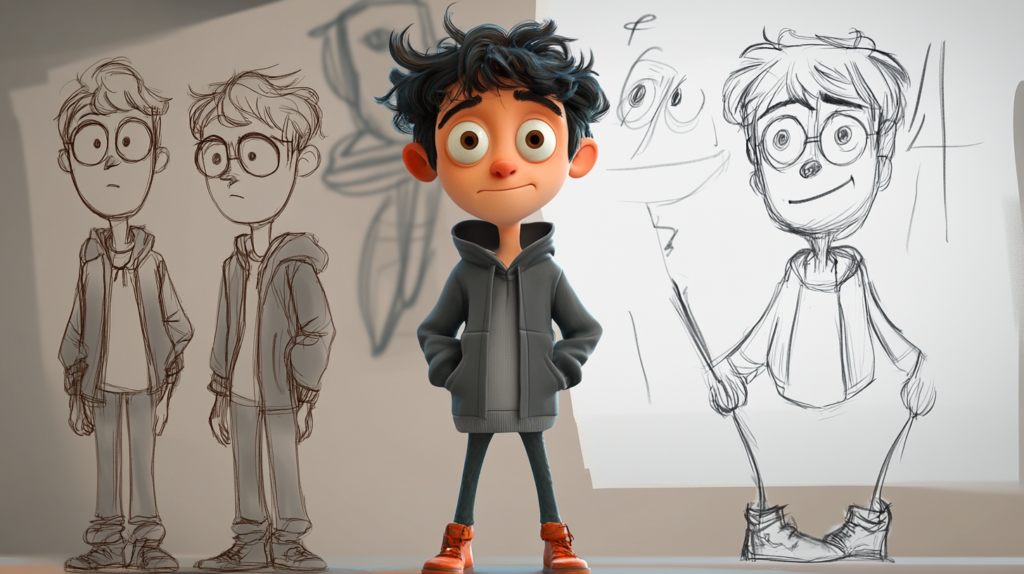
2. Designing the Character’s Appearance
Start with Basic Shapes
Many cartoon characters are built from simple shapes, which makes them easy to recognize and reproduce. Begin by sketching basic shapes like circles, ovals, and rectangles to form the body, head, and limbs of your character. These basic shapes will serve as the foundation for your character’s design.
For example:
- A round head might suggest a friendly, approachable character.
- A tall, rectangular body might indicate a more serious or rigid personality.
- Short, stocky shapes might suggest strength or stubbornness.
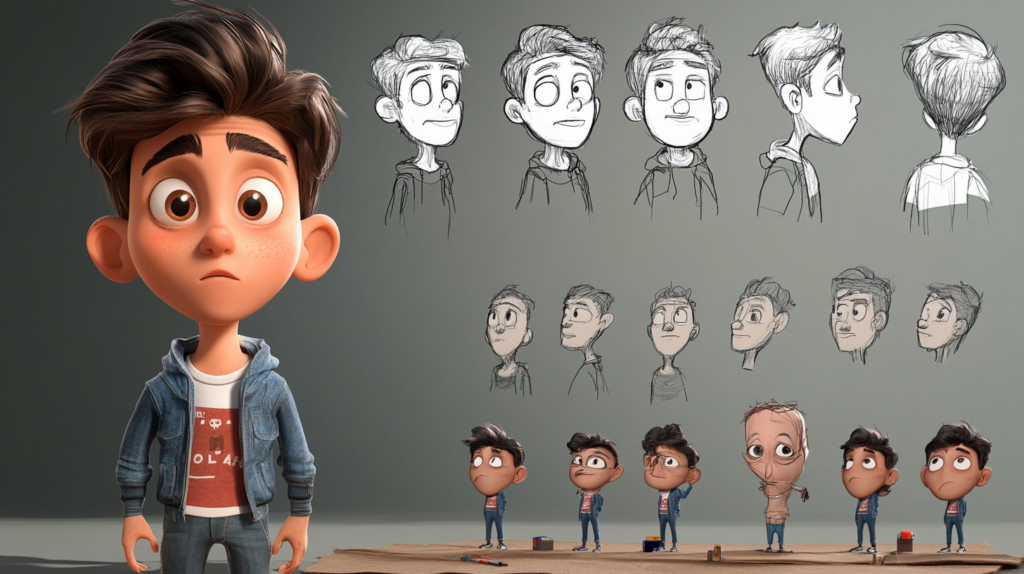
Focus on Proportions
Proportions are key to giving your character a distinct look. Exaggerating certain features can add personality and make your character more visually interesting:
- Large eyes can convey innocence or excitement.
- An oversized head can make a character appear more youthful or emphasize their expressions.
- Long limbs might suggest agility or clumsiness.
Play around with proportions to find a balance that suits your character’s personality and role.
Add Distinctive Features
Give your character distinctive features that make them stand out and are easy to recognize. These could include:
- Unique hairstyles or hair colors
- Distinctive clothing or accessories (like a hat, glasses, or a scarf)
- Unusual physical traits (like a big nose, sharp teeth, or a particular pattern on their skin)
These features help your character become more memorable and can also hint at their personality or backstory.
Experiment with Expressions
A key part of character design is ensuring your character can convey a wide range of emotions through their facial expressions. Practice drawing your character with different expressions—happy, sad, angry, surprised, and so on. Pay attention to how the eyes, eyebrows, mouth, and other features change with each expression. This will help you understand how to animate or illustrate your character in different situations.
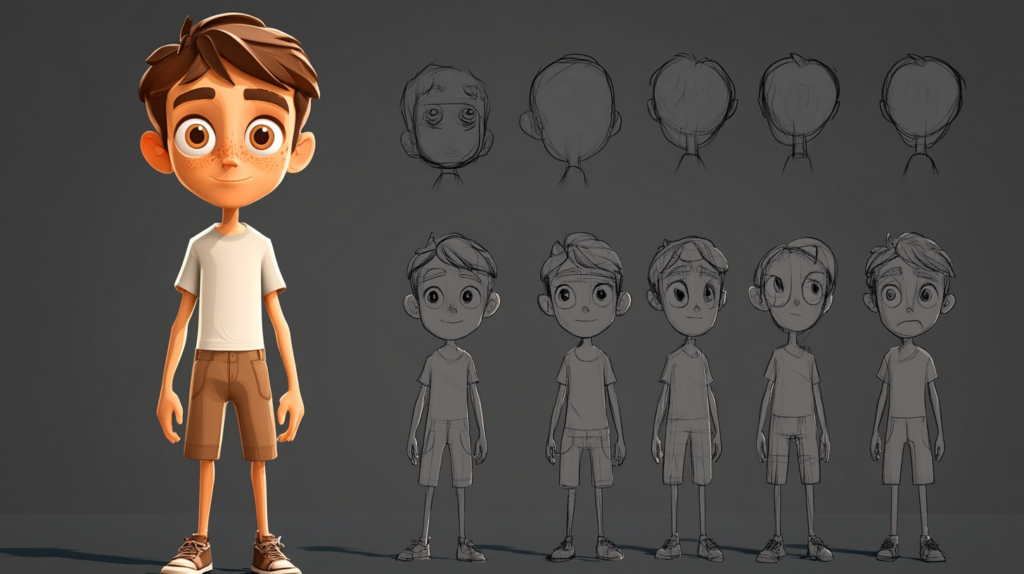
3. Developing the Character’s Personality
Give Them a Distinct Personality
Your character’s personality should shine through in both their design and behavior. Consider the following personality traits:
- Are they optimistic or pessimistic?
- Do they have a sense of humor? If so, what kind?
- Are they brave, cowardly, or somewhere in between?
- How do they interact with other characters?
The personality of your character will influence how they move, speak, and react to different situations. Think about how you can visually represent these traits in your character’s design.
Create a Signature Pose or Gesture
A signature pose or gesture can help reinforce your character’s personality and make them more recognizable. This could be a particular way they stand, a unique walk, or a gesture they frequently make. For example, a confident character might always stand with their hands on their hips, while a nervous character might fidget or avoid eye contact.
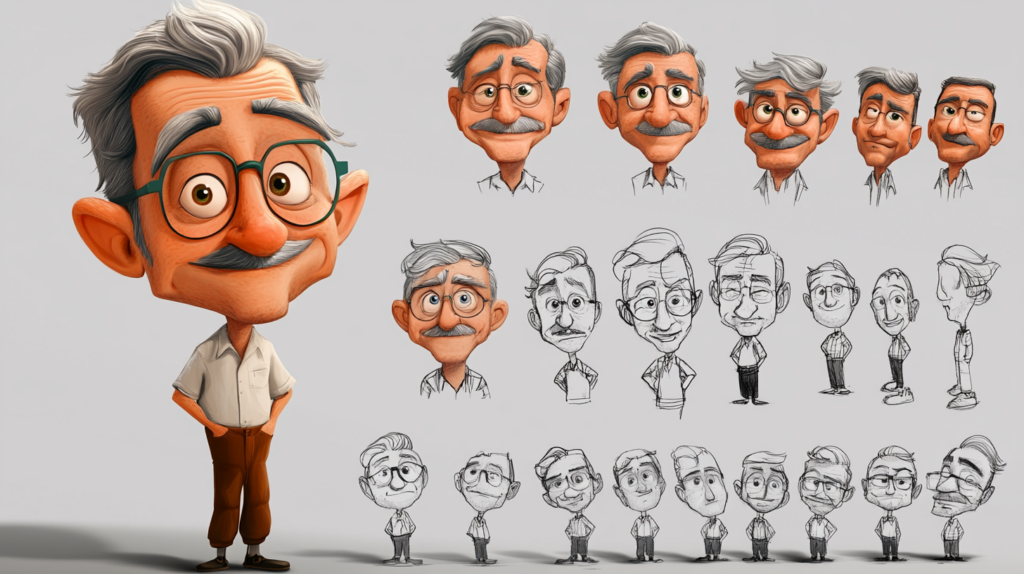
4. Refining the Character Design
Test Different Color Schemes
Color plays a crucial role in how your character is perceived. Different colors can evoke different emotions and associations. Experiment with various color schemes to see what fits your character best:
- Bright, bold colors might suggest a fun, energetic personality.
- Muted, earthy tones could imply a more serious or grounded character.
- Monochromatic schemes might be used for a mysterious or otherworldly character.
Make sure the colors work well together and reflect the character’s personality and role.

Simplify and Streamline the Design
While it’s tempting to add lots of details to your character, simplicity is often more effective, especially in cartooning. A streamlined design is easier to reproduce and makes your character more versatile in different situations. Remove any unnecessary details that don’t contribute to the character’s personality or story. The goal is to create a design that is both distinctive and easy to draw.
Create Multiple Angles
To fully understand your character’s design, it’s helpful to draw them from multiple angles—front, side, and back views. This will help you see how the character looks in different perspectives and ensure that the design is consistent. If you plan to animate the character, these different angles will also be essential for creating smooth and believable movements.
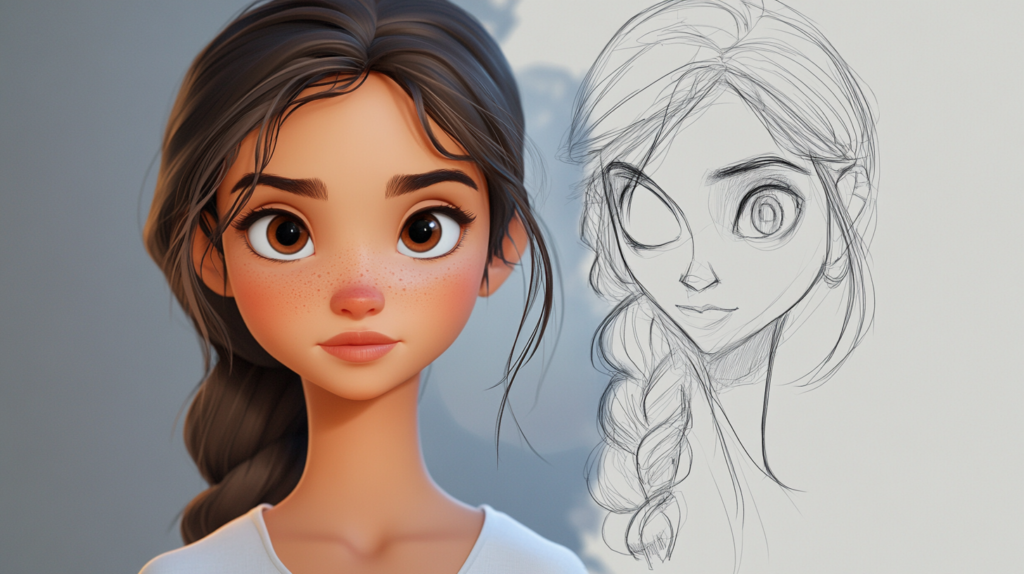
5. Bringing the Character to Life
Draw Your Character in Different Scenarios
Once you have a solid design, start drawing your character in different scenarios and poses. This will help you understand how they move and interact with their environment. It’s also a great way to explore their personality further:
- How do they react to challenges or surprises?
- What are their everyday activities?
- How do they interact with other characters?
These sketches can serve as a foundation for storyboards, comics, or animations.
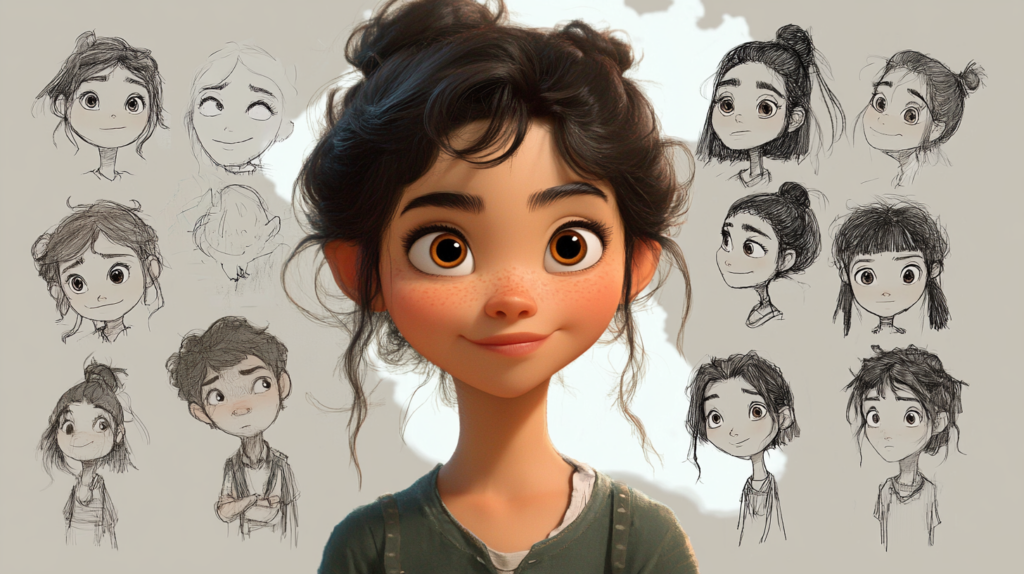
Create a Character Turnaround
A character turnaround is a series of drawings showing the character from multiple angles, typically front, side, and back. This is especially useful if you’re planning to animate your character or if you’ll be working with other artists who need to understand the character’s design. A turnaround ensures consistency in how the character is depicted across different scenes and poses.
Develop a Catchphrase or Signature Line
If your character is part of a story or animation, consider giving them a catchphrase or signature line that reflects their personality. This could be something they say often, a phrase that captures their outlook on life, or a humorous quip that sets them apart. A memorable catchphrase can make your character more relatable and recognizable to your audience.
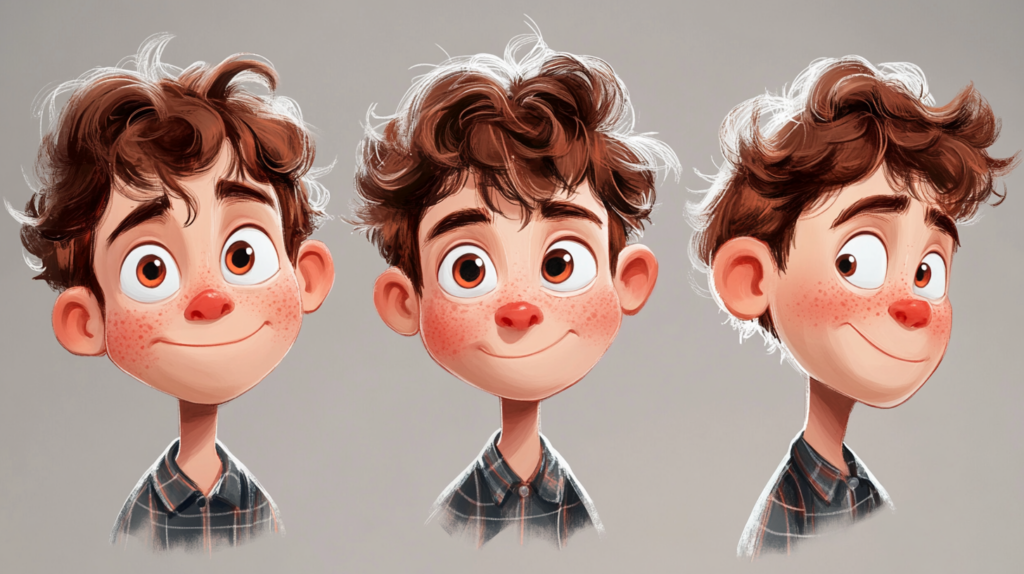
6. Finalizing and Showcasing Your Character
Create a Final Render
Once you’re happy with your character design, create a final, polished version. This can be a detailed illustration that showcases the character’s full color scheme, pose, and expression. This final render can be used as a reference for future drawings or as a showcase piece in your portfolio.
Showcase Your Character Online
Share your character with the world by posting it on social media, art communities, or your own website. Engaging with an audience can provide valuable feedback and help you refine your character even further. Platforms like Instagram, DeviantArt, and ArtStation are great places to share your work and connect with other artists.
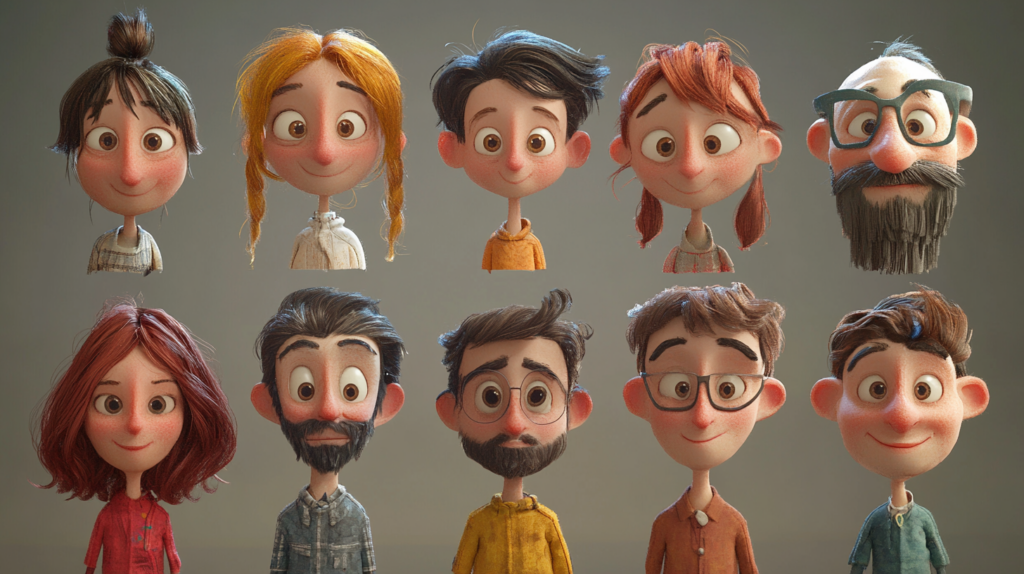
Consider Animation or Comics
If you’re interested in storytelling, consider bringing your character to life through animation or comics. Start with short animations or comic strips to explore how your character moves and interacts with others. This can help you develop their personality further and create engaging stories that resonate with your audience.
Bringing Your Cartoon Character to Life
Creating your own cartoon character is a rewarding process that allows you to express your creativity and bring your ideas to life. By focusing on design, personality, and storytelling, you can create a character that is not only visually appealing but also full of life and personality. Whether your character becomes part of a comic strip, an animated series, or a personal project, the skills and techniques you develop along the way will help you grow as an artist and storyteller. So grab your sketchbook or tablet, and start bringing your cartoon character to life!
Frequently Asked Questions about Creating Your Own Cartoon Character
What are the first steps to take when creating a cartoon character?
Start by brainstorming your character’s concept, including their personality, background, and role. Sketch rough designs to visualize different aspects such as their appearance, clothing, and distinctive features. Define their motivations, strengths, and weaknesses to build a well-rounded character.
How important is character design in creating a cartoon character?
Character design is crucial as it visually represents your character’s personality and traits. A well-designed character should be distinct, memorable, and easily recognizable. Consider elements like shape, color, and expression, which contribute to the character’s appeal and convey their identity effectively.
What role does backstory play in character development?
A backstory adds depth to your character by providing context for their motivations and behavior. It helps to explain why they act the way they do, and can influence their interactions with other characters and their role in the story. A compelling backstory can make your character more relatable and engaging.
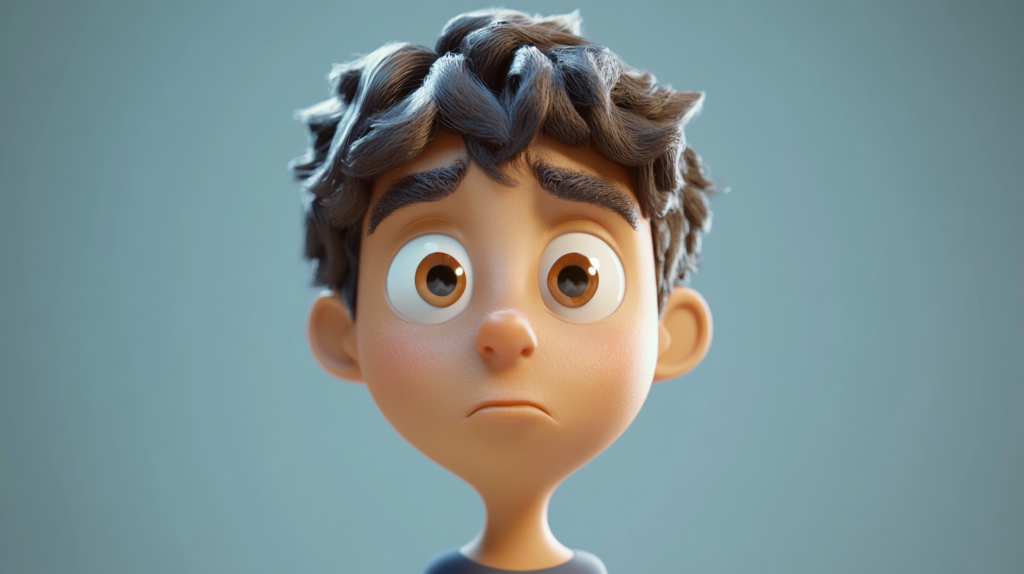
How can you ensure your cartoon character stands out and is unique?
To make your character unique, focus on creating distinctive traits or features that set them apart from others. Avoid clichés and consider blending unusual characteristics or combining different influences. Originality in their design, personality, and backstory will help them stand out.
What are some tips for developing a character’s personality and voice?
Develop your character’s personality by defining their traits, likes, dislikes, and quirks. Consider how these traits influence their behavior and interactions. For their voice, think about their tone, speech patterns, and language style. Consistency in personality and voice will help bring the character to life.
How do you create effective character poses and expressions?
Practice drawing your character in various poses and expressions to capture their emotions and actions dynamically. Study how different emotions affect body language and facial expressions. Use reference images and practice sketching to improve the versatility and believability of your character’s poses and expressions.
What should you consider when integrating your character into a story or world?
Ensure your character’s design and personality align with the world and storyline you’re creating. Think about how they fit into the setting, interact with other characters, and contribute to the plot. Consistency in their role and behavior within the story helps maintain coherence and believability.
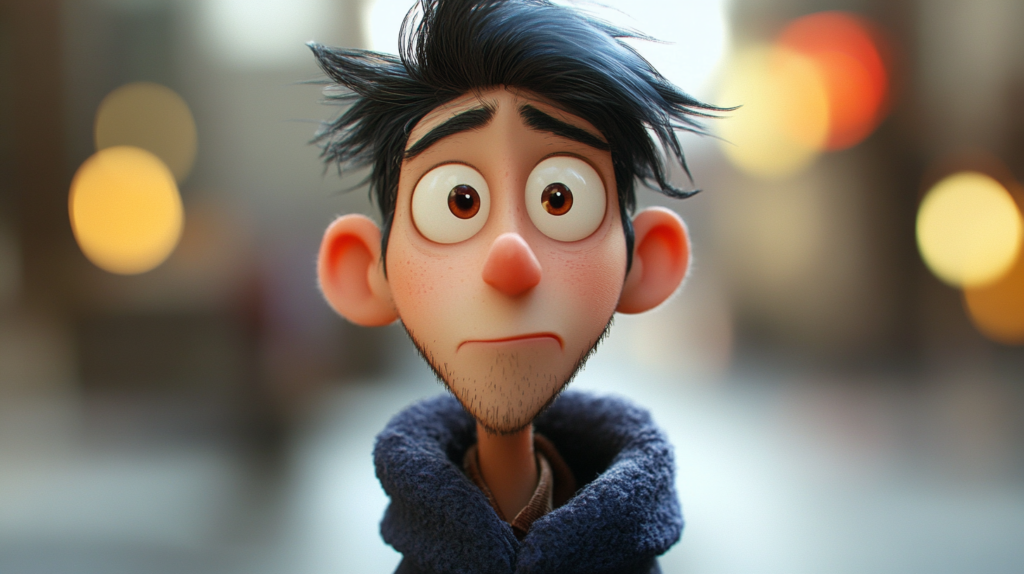
How can you test and refine your cartoon character?
Test your character by putting them in different scenarios and see how they behave. Gather feedback from others, such as peers or potential audience members, to gauge their reactions and impressions. Use this feedback to refine the character’s design, personality, and role to better meet your goals.
What are some common mistakes to avoid when creating a cartoon character?
Common mistakes include creating overly complex designs that are difficult to animate, relying on clichés or stereotypes, and not fully developing the character’s personality or backstory. Avoid inconsistencies in design and behavior, and ensure your character serves a clear purpose in the story.
How can you use digital tools to enhance the creation of your cartoon character?
Digital tools can streamline the design process through vector graphics, digital sketching, and color palettes. Software like Adobe Illustrator, Photoshop, or Procreate allows for easy adjustments and experimentation with design elements. Animation tools can also help in creating dynamic poses and testing character movement.
This post was created with our nice and easy submission form. Create your post!










8 Comments